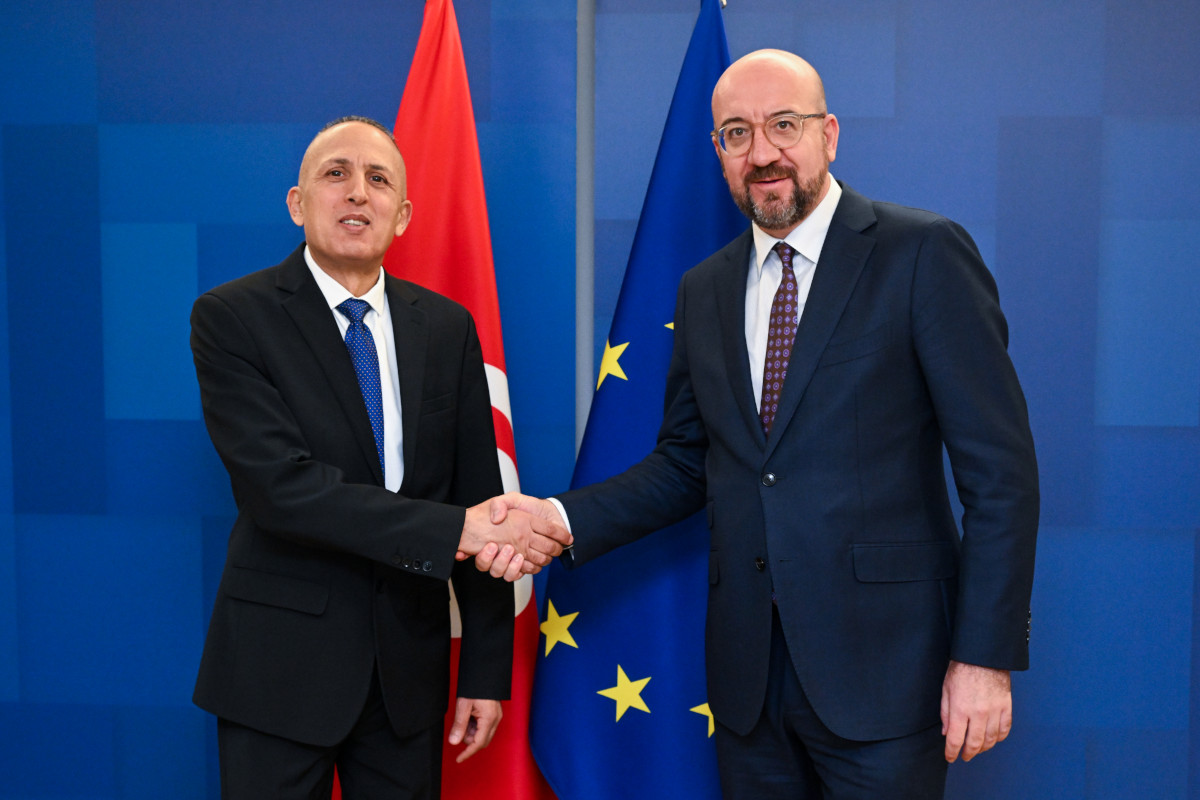EU: Definition of “potential terrorists” opens door to broad information-sharing
Topic
Country/Region
02 October 2024
EU member states can now collect and share information on “potential terrorists”. This category is based on a new informal definition that was agreed with no democratic scrutiny. While claiming to target those who may engage in political violence, there is potential for far broader application.
Support our work: become a Friend of Statewatch from as little as £1/€1 per month.

Image: Andrew, CC BY-NC-ND 2.0
Increasing efforts against “radicalisation”
The EU and its forerunners have targeted radicalism and “radicalisation” for decades. This agenda gained a firmer hold in 2011, when the European Commission established the Radicalisation Awareness Network.
In June this year, the Commission launched a new €60 million (pdf) “Knowledge Hub” to further expand the agenda. The hub aims “to collaborate in a new way at the EU level to address the challenges posed by radicalisation.”
Around the same time, the Belgian Council presidency circulated a document (pdf) which “sums up the Presidency focus areas and initiatives for the past six months in the domain of counter-terrorism (CT)”. It says:
“Member States should continue their efforts to recognise and handle, at an early stage, public security threats stemming from individuals considered by national law enforcement authorities to constitute a violent extremist/terrorist threat.”
This would rely on information on these individuals being entered into EU databases, such as the Schengen Information System or Europol’s files. The document says information should be entered “where possible and in line with national and EU legislation.”
Informal definition of “potential terrorist”
These plans build upon a recent “shared understanding” of who EU authorities consider a "potential terrorist or violent extremist threat,” a concept encapsulated in the document by the German term Gefährder. The German authorities introduced the phrase and the topic of “potential terrorists” into EU institutions.
The Council’s internal security committee (COSI) approved this “shared understanding” in May this year (pdf).
By framing it as a “shared understanding”, COSI avoided legal reforms. This would have required lengthy negotiations, as well as an opportunity for democratic scrutiny.
The document that sets out the definition (pdf) notes:
“The criteria are strictly non-binding and do not affect the existing mechanisms and procedures already established at European and national level. Their goal is to promote entering such individuals into the European databases and information systems by the Member States subject to the legal requirements governing these systems.” (emphasis in original)
As previously reported by Statewatch, the criteria consist of three points.
- A “minimum materiality threshold”. This requires “objective and verifiable… information suggesting that a criminal offence, or future criminal offence, has a certain degree of seriousness.”
- A “basic indicative criterion”. This requires “objective, verifiable information” leading to a belief that the individual in question “will in the future commit, facilitate, support or engage in terrorist or violent extremist offences.”
- A series of “indicative auxiliary criteria”. This could be involvement in terrorist offences, sharing terrorist content online, or being the subject of an EU entry ban.
This Council initiative comes at the same time as the EU’s rollout of new information systems and an updated Europol mandate. These developments will massively expand the EU’s collection of information on “risky” individuals.
Through this “shared understanding”, the Council of the EU has created space for a new, informal practice. It will likely permit the collection and sharing of data on far more people than those involved in terrorism and violence.
The effects on asylum-seekers and refugees
The Belgian Presidency document outlines categories of people who this new practice may cover. These include asylum seekers and refugees, as well as climate and environmental activists.
The document notes the “limited” number of asylum seekers and refugees involved in terrorism and violence, but the new initiative adds to others that frame them as suspects.
As Statewatch reported in March, this includes an expanded intelligence-sharing plan introduced by the Belgian Presidency. This seeks to “strengthen cooperation and exchange of information between immigration and asylum authorities and between CT [counter-terrorism] authorities,” likely to be policing and intelligence agencies.
They justify this as a response to “terrorist attacks in Europe” that have “triggered a debate on how to better prevent future attacks.”
The effects on climate and environmental activists
The EU’s interest in “radicalisation” also targets climate and environmental activists. The recent Belgian Presidency document states:
“Climate activism is on the rise, together with an increased willingness to use violence, marking a shift from environmental activism to environmental extremism” (emphasis in original).
To back this up, the document refers to a report by the EU Counter-Terrorism Coordinator, which purportedly examined “the role climate change and environmental concerns play in the ideologies and narratives of violent extremists and terrorists in the EU.”
Yet, the report itself said it was largely speculative:
“The potential for terrorism and violent extremism linked to the environment and climate change is at this moment limited but might become more significant in the coming years.”
The Belgian Presidency document included a similar note on the “limited” number of asylum seekers and refugees involved in terrorism and violence. Yet, both groups remain targets of the EU’s agenda against “radicalisation”.
The UN Special Rapporteur on Environmental Defenders under the Aarhus Convention has issued a warning that:
“…the conflation of peaceful climate activism with radicalisation and terrorism may increase polarisation by wrongly labelling activists as radicals and trivialising terrorism.”
Harsh sentences are being handed down to peaceful climate protesters by both EU member states and the UK. The latter remains closely tied to the EU’s policing structures through its cooperation with Europol.
For example, at the end of August, Climate Rights International reported:
“…a German court sentenced 65-year-old Winfried Lorenz to 22 months in prison without parole, for his involvement in a climate protest that blocked a road. It is believed to be the longest sentence ever imposed in Berlin against a climate activist.”
Documentation
- Counterterrorism: Current challenges and Presidency initiatives and activities in the area (Council doc. 10406/24, LIMITE, 3 June 2024, pdf)
- A shared understanding of when a person should be regarded as a potential terrorist or violent extremist threat (“Gefährder”) (Council doc. 9988/24, LIMITE, 22 May 2024, pdf)
- Outcome of proceedings, Standing Committee on Operational Cooperation on Internal Security (COSI) (Council doc. 10752/24, 27 June 2024, pdf)
Our work is only possible with your support.
Become a Friend of Statewatch from as little as £1/€1 per month.
Further reading

Who’s a “potential terrorist or violent extremist threat”? Plans to exchange information about “future” criminals
EU member states have finalised a set of “non-binding” criteria for assessing when someone may be labelled a potential terrorist or violent extremism threat. The intention is to feed European databases such as the Schengen Information System (SIS) and the Europol Information System (EIS), as well as Europol analysis projects such as “Hydra” and “Traveller”, according to a note circulated by the Belgian Council Presidency last month.

EU: Intelligence-sharing plan extended from asylum-seekers to "any foreigner involved in a migratory procedure"
In 2022, EU member states began discussing ways to increase the amount of information sent to intelligence agencies on "the timing and state of progress of applications for international protection lodged by individuals posing a terrorist threat". Now the intention is to cover not just asylum-seekers, but "any foreigner involved in a migratory procedure." According to the Belgian Presidency, "security concerns go beyond the mere scope of applicants for international protection, as they also cover other people who apply for the legal right to stay in Europe."

Environmental activism under the EU counter-terror microscope
Next week, EU and member state officials will discuss “the role of climate change and environmental concerns in violent extremist and terrorist radicalisation.” A discussion paper for the meeting, obtained by Statewatch, considers the threat posed by “violent left-wing and anarchist extremism” – a heading under which a number of prominent environmental protest groups are mentioned. The inclusion of peaceful but disruptive groups in the paper may legitimate further police surveillance and infiltration, legal harassment and government crackdowns – a problem identified as “a major threat to human rights and democracy” by a UN Special Rapporteur.
Spotted an error? If you've spotted a problem with this page, just click once to let us know.

